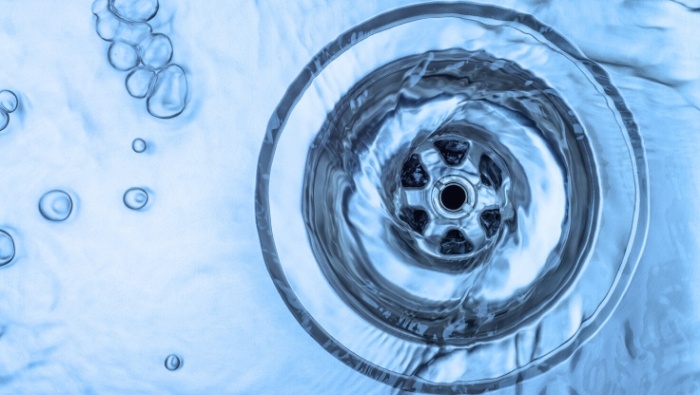21 Ways To Save Water and Money
We probably all could use some tips for conserving both water and money. Here are several ways to avoid being left high and dry after paying your water bill.

During the Great Depression, my grandmother said that folks saved water (and money) by bailing out bathtubs with buckets and sloshing their dirty bathwater on outdoor plants.
When I lived in Florida in the early 2000s, our county restricted outdoor watering to twice a week. During droughts, this threatened my rose bushes. Like Grandma, I also bailed bathwater, reusing maybe one to two dozen gallons each time. It took a while, but my roses survived.
Saving water is vital because droughts and population growth have strained water supplies all over. A number of states have experienced water shortages over the past few decades, whether from water stress where demands exceed supply or poor water quality.
Additionally, many utilities are raising water rates. We all need to conserve both water and money. Here are ways to avoid being left high and dry:
Simple Ways To Save Water (and Money!)
1. Do not run water unnecessarily while brushing your teeth or washing the car.
2. Turn off faucets while you shampoo or shave. This could save as much as 150 and 300 gallons, respectively, per month.
3. Only run dishwashers and washing machines with full loads, using the shortest cycle necessary.
4. Don’t turn on the faucet if a chore can be done sans water (think scraping dishes or sweeping driveways).
5. Showers, especially speedy ones, use less water than baths. A low-flow showerhead slashes usage. Also, be sure to turn off the water while lathering.
Sign Up for Savings
Subscribe to get money-saving content by email that can help you stretch your dollars further.
Twice each week, you'll receive articles and tips that can help you free up and keep more of your hard-earned money, even on the tightest of budgets.
We respect your privacy. Unsubscribe at any time.
6. Do you have an ultra-low flow shower head? You should. Time how long it takes to fill a gallon bucket in your shower. Under 20 seconds indicates a water-waster. When I replaced my old water-guzzling shower head, the hot water lasted a lot longer.
7. Low-flow toilets use a little over a gallon a flush. Really old toilets may use seven gallons per flush! Therefore, some utilities offer rebates for replacing them.
8. Dripping faucets? One drop per second adds up to 2,700 gallons a year. Call a plumber or handyman if you can’t DIY.
9. Even though bathrooms use a large amount of all water flowing into your home, lawns and gardens gulp hundreds more gallons.
10. Hate mowing? Install drought-resistant ground cover, a deck, or a patio over a wide swath of yard.
11. In extreme droughts, some folks let their grass go dormant and only water it once every two weeks, which is enough to keep it alive.
12. Xeriscaping (water-saving landscaping) is remains a popular trend in many parts of the country. Your county agriculture extension agent can recommend drought-resistant plants for your area. Group plants according to watering needs. Don’t drown one species as you water its thirsty neighbor.
13. Use soaker hoses or drip irrigation, not sprinklers that spray a fine mist. Water the roots; don’t just wet the top. Irrigate only if necessary. More gardeners kill from over-watering than from neglect.
14. Be sure to water in cooler morning or evening hours, so the blazing sun doesn’t cause evaporation.
15. One town’s laws mandated automatic sprinkler systems have rain sensors. If it rains, they won’t automatically turn on. It’s a great idea!
16. Be sure your sprinkler water is going where it needs to go. Hand water if you can’t adjust the sprinkler.
17. If it’s 85 degrees or cooler, your yard only needs about an inch of water per week, including rainfall. Hotter weather ups this to an inch and a half. Before watering, ensure the ground is bone dry below the surface. Mulch, such as fallen leaves, slows evaporation, and so does cutting the grass a little bit higher.
18. Coming home from a fast-food run or eating outdoors? Toss your remaining ice onto a plant. Leftover dishwater or aquarium water can be reused on plants instead of dumped down the drain. The same is true with cooking water left in a pot or leftover coffee (after cooling down).
19. Rain barrels let you reuse rainwater. It’s full of nitrogen and good for all plants.
20. Compost any produce waste, tea, and coffee grounds. Don’t use the garbage disposal.
21. On hot days, let the kids run through the sprinkler on a dry lawn; the grass and your children will be refreshed. Or bathe the dog outdoors.
According to the EPA, the average American family uses 300 gallons of water per day. Water use is one area where it pays to be below average!
Reviewed April 2024
Popular Articles
On After50Finances.com
- 9 Things You Need to Do Before You Retire
- You Didn’t Save Enough for Retirement and You’re 55+
- When Empty Nesters Reorganize and Declutter Their Home
- Reinventing Your Career in Your 50s or 60s
- What Mature Homeowners Should Know about Reverse Mortgages
- 2 Reasons to Collect Social Security Benefits As Soon As Possible



